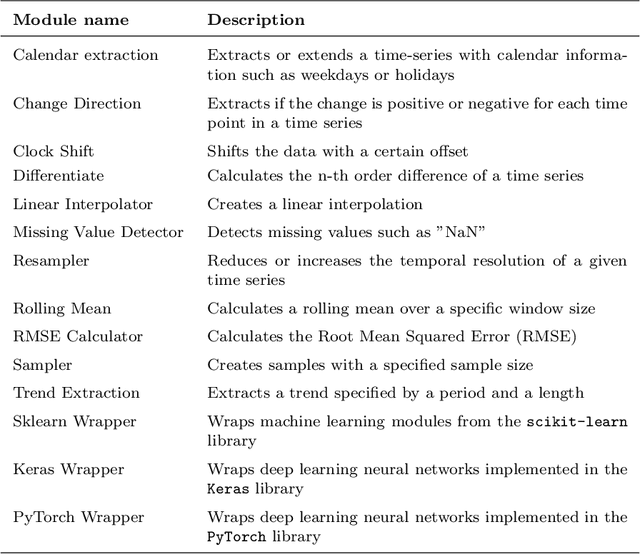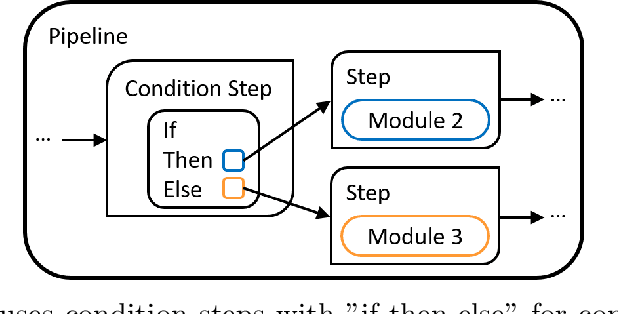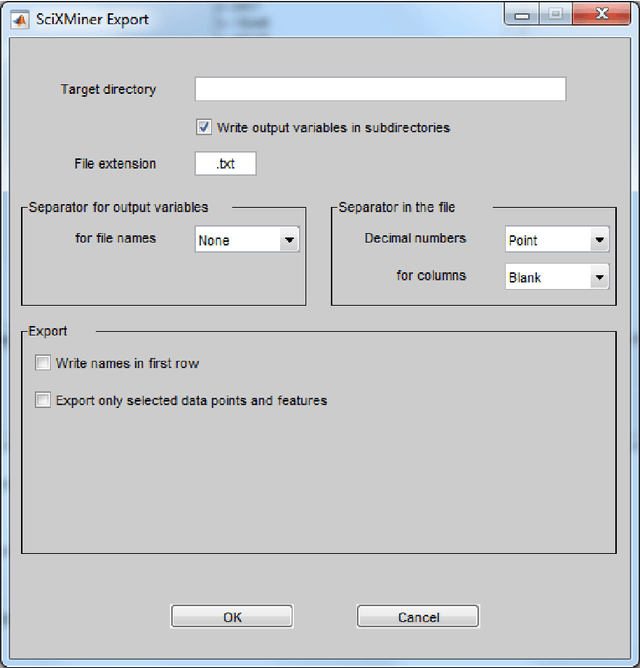Andreas Bartschat
pyWATTS: Python Workflow Automation Tool for Time Series
Jun 18, 2021



Abstract:Time series data are fundamental for a variety of applications, ranging from financial markets to energy systems. Due to their importance, the number and complexity of tools and methods used for time series analysis is constantly increasing. However, due to unclear APIs and a lack of documentation, researchers struggle to integrate them into their research projects and replicate results. Additionally, in time series analysis there exist many repetitive tasks, which are often re-implemented for each project, unnecessarily costing time. To solve these problems we present \texttt{pyWATTS}, an open-source Python-based package that is a non-sequential workflow automation tool for the analysis of time series data. pyWATTS includes modules with clearly defined interfaces to enable seamless integration of new or existing methods, subpipelining to easily reproduce repetitive tasks, load and save functionality to simply replicate results, and native support for key Python machine learning libraries such as scikit-learn, PyTorch, and Keras.
Towards DeepSpray: Using Convolutional Neural Network to post-process Shadowgraphy Images of Liquid Atomization
Oct 11, 2019



Abstract:This technical report investigates the potential of Convolutional Neural Networks to post-process images from primary atomization. Three tasks are investigated. First, the detection and segmentation of liquid droplets in degraded optical conditions. Second, the detection of overlapping ellipses and the prediction of their geometrical characteristics. This task corresponds to extrapolate the hidden contour of an ellipse with reduced visual information. Third, several features of the liquid surface during primary breakup (ligaments, bags, rims) are manually annotated on 15 experimental images. The detector is trained on this minimal database using simple data augmentation and then applied to other images from numerical simulation and from other experiment. In these three tasks, models from the literature based on Convolutional Neural Networks showed very promising results, thus demonstrating the high potential of Deep Learning to post-process liquid atomization. The next step is to embed these models into a unified framework DeepSpray.
Transfer Learning with Human Corneal Tissues: An Analysis of Optimal Cut-Off Layer
Jun 22, 2018

Abstract:Transfer learning is a powerful tool to adapt trained neural networks to new tasks. Depending on the similarity of the original task to the new task, the selection of the cut-off layer is critical. For medical applications like tissue classification, the last layers of an object classification network might not be optimal. We found that on real data of human corneal tissues the best feature representation can be found in the middle layers of the Inception-v3 and in the rear layers of the VGG-19 architecture.
Cell Segmentation in 3D Confocal Images using Supervoxel Merge-Forests with CNN-based Hypothesis Selection
Oct 18, 2017



Abstract:Automated segmentation approaches are crucial to quantitatively analyze large-scale 3D microscopy images. Particularly in deep tissue regions, automatic methods still fail to provide error-free segmentations. To improve the segmentation quality throughout imaged samples, we present a new supervoxel-based 3D segmentation approach that outperforms current methods and reduces the manual correction effort. The algorithm consists of gentle preprocessing and a conservative super-voxel generation method followed by supervoxel agglomeration based on local signal properties and a postprocessing step to fix under-segmentation errors using a Convolutional Neural Network. We validate the functionality of the algorithm on manually labeled 3D confocal images of the plant Arabidopis thaliana and compare the results to a state-of-the-art meristem segmentation algorithm.
The MATLAB Toolbox SciXMiner: User's Manual and Programmer's Guide
Apr 11, 2017



Abstract:The Matlab toolbox SciXMiner is designed for the visualization and analysis of time series and features with a special focus to classification problems. It was developed at the Institute of Applied Computer Science of the Karlsruhe Institute of Technology (KIT), a member of the Helmholtz Association of German Research Centres in Germany. The aim was to provide an open platform for the development and improvement of data mining methods and its applications to various medical and technical problems. SciXMiner bases on Matlab (tested for the version 2017a). Many functions do not require additional standard toolboxes but some parts of Signal, Statistics and Wavelet toolboxes are used for special cases. The decision to a Matlab-based solution was made to use the wide mathematical functionality of this package provided by The Mathworks Inc. SciXMiner is controlled by a graphical user interface (GUI) with menu items and control elements like popup lists, checkboxes and edit elements. This makes it easier to work with SciXMiner for inexperienced users. Furthermore, an automatization and batch standardization of analyzes is possible using macros. The standard Matlab style using the command line is also available. SciXMiner is an open source software. The download page is http://sourceforge.net/projects/SciXMiner. It is licensed under the conditions of the GNU General Public License (GNU-GPL) of The Free Software Foundation.
 Add to Chrome
Add to Chrome Add to Firefox
Add to Firefox Add to Edge
Add to Edge